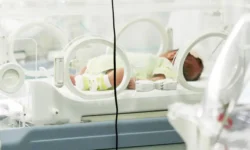Epilepsy and seizures in children are often the result of lack of oxygen during birth (asphyxia or HIE), head trauma, low blood sugar, intracranial hemorrhaging, brain malformations, and other brain injuries.
This information was compiled from government sources, educational non-profits, and medical experts.
Read more to learn more about what causes epilepsy and seizures in children and how epilepsy can be treated.
What Is Epilepsy?
Epilepsy is a neurological disorder that can affect people of all ages. The term “epilepsy” draws its meaning from the Latin “epilepsia” and Greek “epilepsis,” which both mean: seizure.
The severity of one’s epilepsy can vary significantly from person to person and as one ages. Some people with epilepsy have only mild and infrequent seizures, while others struggle with frequent and more severe seizures. Epilepsy is also considered a chronic disorder, which means that it endures for more than three months. Often, epilepsy affects a person for years.
Epilepsy is characterized as having uncontrollable seizures. A seizure is a sudden and uncontrolled storm of electrical signals within the brain. Seizures often last between thirty seconds and two minutes. If a seizure goes on longer than five minutes, it’s considered a medical emergency. For people who are prone to seizures, coaching friends and loved ones on how to respond to a seizure can help reduce the chance of injury during a seizures.
While experiencing a seizure, people often seem confused, or will stare vacantly. Additional symptoms include uncontrollable twitching and jerking of the arms and legs, falling over, and loss of consciousness. People who are prone to frequent seizures may also experience fear, anxiety, and depression related to their condition.
Additionally, people who have been diagnosed with epilepsy may face challenges later in life related to independence and mobility. For people who experience frequent seizures it may be unsafe to drive a car and may be difficult to maintain regular employment. As many as 43% of adults with frequent seizures are disabled and 32% are unemployed.
Getting help for a child with HIE or Cerebral Palsy
can make a big difference
Because early intervention is often key to helping improve a child’s wellbeing, it’s important to act swiftly. At the Brown Trial Firm, our Houston birth injury attorneys can help you investigate your case, find answers to your questions, and determine whether you are entitled to compensation. We offer case reviews at no cost or obligation. Many birth injuries that cause cerebral palsy could have been prevented.
What Causes Epilepsy or Seizures in Children?
The causes of epilepsy are varied:
- Lack of oxygen during birth (known as asphyxia and hypoxic-ischemic encephalopathy or HIE)
- Head trauma
- Intracranial hemorrhaging (or bleeding on the inside of the skull)
- Malformation of the brain during development
- Low levels of blood sugar, calcium, magnesium, or electrolytes
- Mother drug use during pregnancy
- High / sustained fever
- Brain tumors
- Infections
- Serious congenital conditions (including Down’s syndrome, Angelman’s syndrome, tuberous sclerosis, and neurofibromatosis)
- Progressive brain diseases
- Other genetic reasons
In infants, epilepsy can be caused by brain injury during the labor and delivery process. The injury that results in seizures can also often result in hypoxic-ischemic encephalopathy (or HIE) and in Cerebral Palsy. Therefore, an infant that is observed to have seizures should be monitored for additional symptoms of HIE and Cerebral Palsy.
Can Epilepsy or Seizures Be Treated?
Yes! The good news is that approximately 65% of people with epilepsy are able to get control over their seizures within several years of a diagnosis. In children, more than 50% will outgrow their epilepsy, and at age twenty, up to 75% of people who experienced seizures as a child are seizure free.
Epilepsy is most often treated through a combination of medicine and neurological observation. Medical professionals observe the frequency and severity of the seizures and may try various types of seizure medicines in search of a treatment plan that both controls the seizures and has as few side effects as possible.
While the outlook is positive for most children to outgrow their epilepsy, some people may have to remain on seizure medicine for their entire lives. If epilepsy is treatment resistant, surgery is another potential treatment.
Surgery is not a treatment option that is to be taken lightly. Although scientists and medical professionals are constantly developing new methods to make surgery safer and more effective, this treatment is often a last resort. For some, however, surgery has proven a highly effective treatment to otherwise treatment resistant seizures.
Is Epilepsy Preventable?
In some cases, yes. If epilepsy is due to a preventable mistake, like one that causes a brain injury or head trauma suffered during labor and delivery, then there is always a question of whether the epilepsy could have been avoided.
For example, if a baby is not receiving enough oxygen during labor and delivery, then the baby will often have an abnormal heart beat. This is a warning sign to medical professionals that something is wrong.
To prevent injury, the medical professionals must follow the medical standard of care and respond appropriately to the warning signs to quickly restore oxygen to the baby. The doctor may want to promptly order a c-section, for example, to accelerate the birth of the child and open up other treatment options after delivery. If the medical professionals do not follow the standard of care, then sometimes a preventable injury will occur.
If you have questions about whether your child’s epilepsy was due to a preventable injury, it’s crucial to discuss your case with a knowledgeable newborn seizures lawyer.
At Brown Trial Firm, birth injury attorney Laura Brown has extensive experience in these types of cases. She can answer your questions, help determine if medical negligence may have contributed to your child’s condition, and explain your legal options. Find out more by scheduling a free consultation.
Sources
Seizures – Symptoms and causes. (2020). Mayo Clinic. Retrieved 9 January 2020, from https://www.mayoclinic.org/diseases-conditions/seizure/symptoms-causes/syc-20365711
Seizures – Diagnosis and treatment – Mayo Clinic. (2020). Mayoclinic.org. Retrieved 9 January 2020, from https://www.mayoclinic.org/diseases-conditions/seizure/diagnosis-treatment/drc-20365730
Surgery. (2020). Epilepsy Foundation. Retrieved 9 January 2020, from https://www.epilepsy.com/learn/treating-seizures-and-epilepsy/surgery
Causes of Epilepsy and Seizures | Epilepsy Foundation. (2020). Epilepsy Foundation. Retrieved 9 January 2020, from https://www.epilepsy.com/learn/about-epilepsy-basics/what-causes-epilepsy-and-seizures
Will I Always Have Seizures?. (2020). Epilepsy Foundation. Retrieved 9 January 2020, from https://www.epilepsy.com/learn/about-epilepsy-basics/will-i-always-have-seizures


